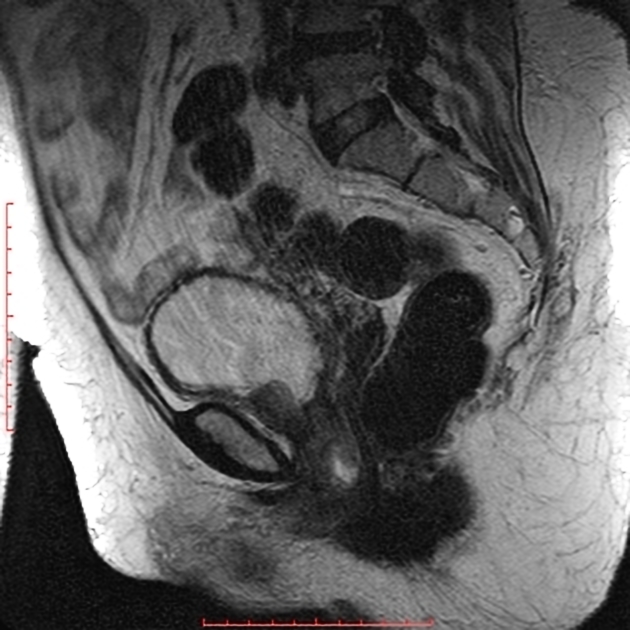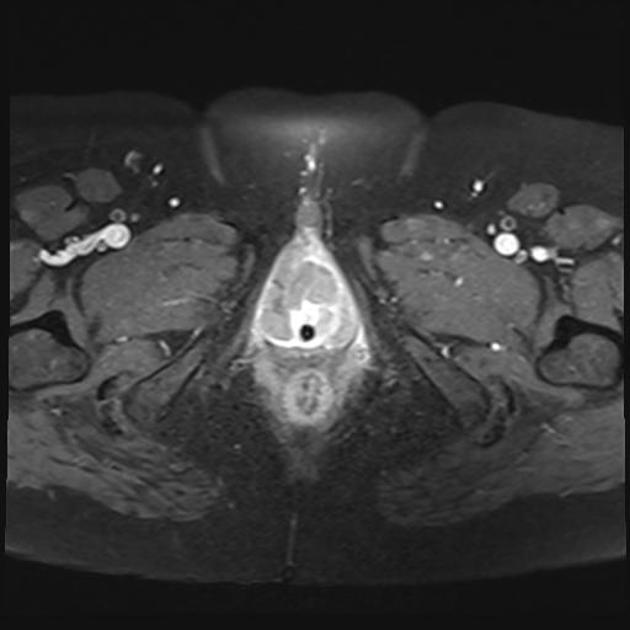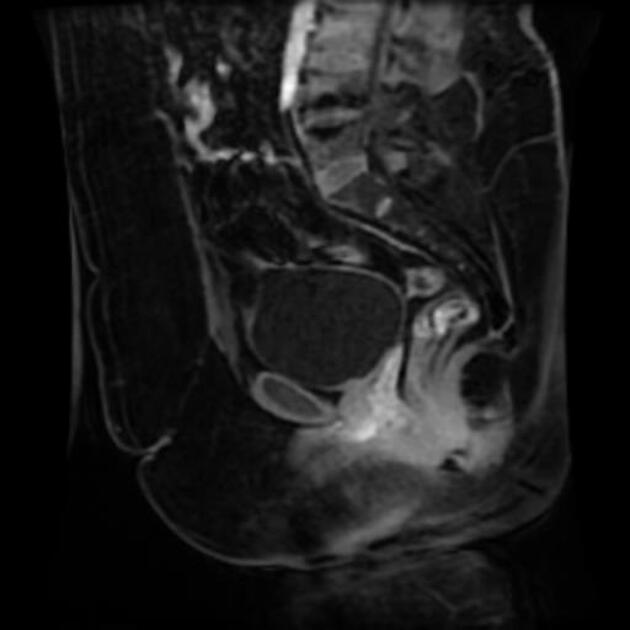Primary urethral cancer, in most cases a urethral carcinoma, is a rare urological malignancy. It can be divided into female urethral cancer and male urethral cancer.
On this page:
Epidemiology
It has an incidence of 4.3 per million for males and 1.5 per million for females. It usually manifests in the 5th decade of life.
Risk factors
Risk factors include:
urethritis
history of sexually transmitted diseases
human papillomavirus (HPV) exposure
Clinical presentation
palpable urethral mass
obstructive voiding symptoms
perineal pain
Pathology
The histologic types are transitional cell carcinoma in 55%, squamous cell carcinoma in 22%, and adenocarcinoma in 16%. In rare instances, sarcoma or melanoma can also occur. Transitional cell carcinoma occurs most commonly in the prostatic urethra whereas squamous cell carcinoma occurs in the remaining urethral segments 5.
Location
In males, the bulbomembranous urethra is the most involved in 60% of the cases, followed by the penile urethra (30%) and prostatic urethra (10%).
In females, the anterior segment (distal two thirds, stratified squamous epithelium) is involved in 46% of the cases. The posterior segment (proximal third, stratified squamous epithelium) is responsible for the remainder of cases.
Staging
TNM staging for female urethral cancer is identical to that for male urethral cancer. See the relevant article on staging of urethral cancer.
In males, it can spread by direct extension into adjacent structures, such as the corpus spongiosum and the periurethral tissues. In females, it usually spreads to the bladder neck, the vagina or the vulva.
Lymphatic metastases usually spread to superficial and deep inguinal nodes and pelvic nodes. Hematogenous spread is uncommon.
Radiographic features
Multiple radiographic investigations are useful, including retrograde cystourethrography, voiding cystourethrogram, contrast-enhanced CT, and MRI.
MRI
MRI is most sensitive and specific for local extension.
T1: low signal mass, difficult to differentiate from urethra
T2: high signal mass
T1 C+ (Gd): variable enhancement
Treatment and prognosis
The optimal treatment for urethral cancer is not well defined. Multimodal therapy with surgery, radiation therapy and chemotherapy is advocated, especially in advanced disease.







 Unable to process the form. Check for errors and try again.
Unable to process the form. Check for errors and try again.